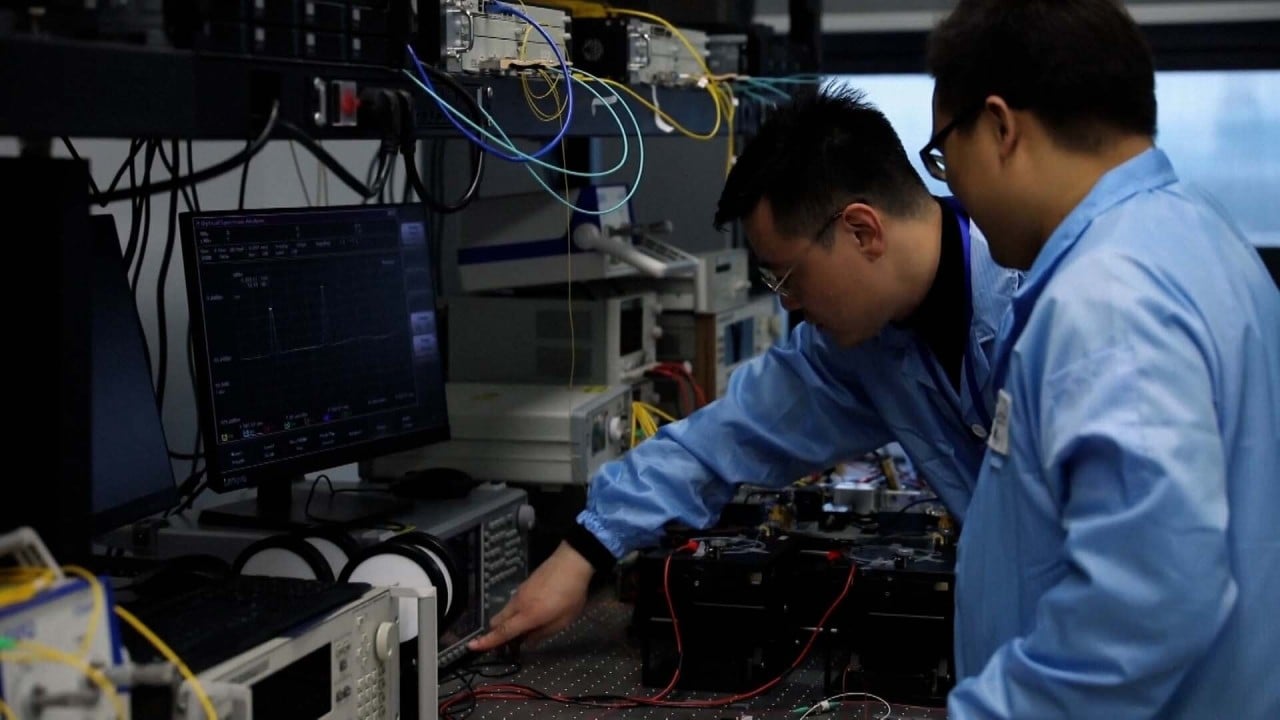The technology “will have significant application potential in underwater vessel detection and other areas,” said the project team with the National University of Defence Technology. Their work was published on August 11 in the Journal of Radars, a Chinese-language peer-reviewed journal
Terahertz is a frequency range between microwave and infrared radiation. Terahertz technology has been proposed as a potential solution for achieving high data rates and low latency for the next generation of communication technology, or 6G.
Advertisement
Electromagnetic signals in this range not only carry a lot more information than existing communication methods but can collect information about the environment. Some airports in China, for instance, use terahertz screening devices to detect illegal items concealed under passenger’s clothes.
Generating powerful terahertz signals used to be difficult but thanks to an increasing investment in 6G in recent years, scientists in China and other countries have achieved breakthroughs that make mass application of the technology possible.
Chinese scientists uncover ‘new solution’ to potentially track US submarines
Chinese scientists uncover ‘new solution’ to potentially track US submarines
And advances mean the terahertz submarine detector could be small enough to mount on a drone, according to the Chinese team.
“A small unmanned aerial vehicle (UAV) platform has the advantage of good mobility, low cost and flexible deployment,” they said in the paper.
And it could work in concert with other submarine detection methods such as a magnetic anomaly detector (MAD), microwave radar or laser.
Advertisement
“As a supplement to existing detection methods, it can provide important information for the detection and identification of submarines,” they added.
The paper did not state when the experiment was conducted but said it was at an unspecified location off the northeastern city of Dalian in the Yellow Sea. At the time of the test, the weather was fair but breaking waves produced lots of bubbles, according to their paper.
Advertisement
The military scientists used an artificial sound source to simulate the noise emitted by a submarine. And to mimic drone flight, the submarine detector was carried by an extended arm of a research ship.
When a submarine is travelling at high speed, “it produces significant radiated noise that propagates to the water surface and excites surface vibration”, the researchers said.
But the disturbance is extremely weak by the time it reaches the surface. Separating it from the natural waves of the ocean was previously thought impossible.
Advertisement
In the test, the terahertz sensor picked up man-made ripples with amplitude ranging from 10 to 100 nanometres, depending on the sea conditions.
The team said the result was a miracle of both hardware and software.
The terahertz waves’ high frequency made it ultra-highly sensitive. The Chinese scientists say they have also developed the world’s first algorithm that can effectively identify nanometre-size ripples over the wobbling ocean.
Advertisement
The same technology could be used in submarine communication, they said.
‘Record 17,000 high school graduates’ join China’s military academies as jobs dry up
‘Record 17,000 high school graduates’ join China’s military academies as jobs dry up
A submarine sometimes needs to establish contact with friendly aircraft to coordinate their movements in a large-scale military operation. The captain could encode messages in surface vibrations too small to be detected by enemy forces.
“By detecting acoustically-induced surface vibration signals, it is possible to invert the information conveyed by underwater sound sources,” the team said.
The sea test results suggested the terahertz technology “has high signal resolution” for cross-medium communication, which remains a challenge to naval powers, they said.
The 6G technology has been used in separate close-range communication experiments between water and the air, which had also produced successful outcomes, they said.
Advertisement



